Clean Up or Cover Up?
Will El Paso finally confront a century-old toxic legacy?
Yvette Ramirez-Ammerman is trying to comprehend why some of her neighbors don’t appear overly concerned about the poison in the ground around them. She sits in her bright, airy, and immaculate home, rocking Alyssa, her 3-year-old daughter on her lap.
“I won’t ever be able to understand the denial,” she says.
Maybe it’s simply a function of time. Ramirez-Ammerman has only lived in El Paso for about three years. When it comes to the toxic metals in the soil, it appears the city has been in denial for well over a century.
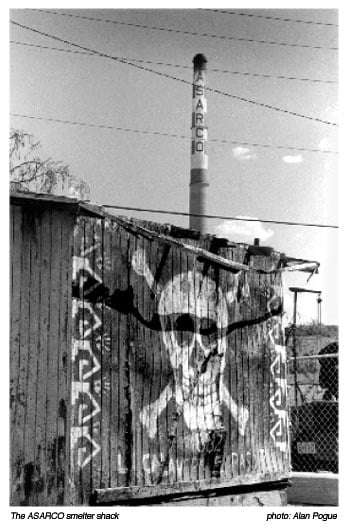
A bulging blue folder rests on the table in front of her. It’s filled with documents of lab exams and visits from soil remediation crews. It’s not what she expected when they moved to El Paso from Albuquerque after her husband received a posting at Fort Bliss. This July morning Ramirez-Ammerman is eight-months pregnant and her face glows with an inner-life that seems at odds with the story she relates.
The Ammermans chose a home in Kern Place, a neighborhood of stately old houses just up the hill from downtown. The real estate agent never mentioned problems with the land. Just the same, Ramirez-Ammerman called the health department to see if there were any concerns. There were none, they informed her. “I wish I had gotten it in writing,” she says with a frown.
It took a while to transform the house into a home. “When we moved here, there was no landscaping,” she says. “Zero.”
The task of overseeing the work kept her and her daughter close to home. “It was Alyssa’s first year and we would play in the mud, and I never thought about it,” says Ramirez-Ammerman.
That is, until stories on local television and in the El Paso Times began to describe how officials from the Environmental Protection Agency (EPA) had fanned out to take soil samples in central El Paso. They were searching for elevated levels of lead and arsenic. Any readings of more than 500 parts per million for lead and 20 parts per million for arsenic were cause for concern. The team focused its investigation within a few miles’ radius of one of El Paso’s signature landmarks, the old smokestacks from the ASARCO smelters, the last of which had been taken offline only a few years before.
Just to be safe, Ramirez-Ammerman brought Alyssa in for a lead test. The then 1-year-old girl’s blood had 6 micrograms of lead per deciliter. Lead is so toxic that it’s measured by the amount of micrograms in a tenth of a liter of blood. The Centers for Disease Control and Prevention (CDC) decided in 1991 that anything above 10 could be dangerous. Alyssa seemed to be in the clear.
Then EPA officials contacted the Ammermans and asked if they could take soil samples outside the house. The results are dated December 4, 2002. In the backyard, the regulators found “acceptable” levels of lead but slightly elevated levels of arsenic. The results in the front yard were more alarming. Lead levels were 250 parts per million above the limit and arsenic was more than double the standard at 43 parts per million. A month later, the Ammermans took Alyssa to a military doctor for an arsenic test. The doctor did a full heavy metals screening Alysa’s lead blood level had gone up to 8. Two months after that, it shot up to 15.
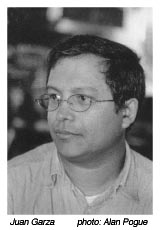
Since the family’s brush with the toxic metals, Ramirez-Ammerman has educated herself about child lead poisoning through conversations with scientists in the field, government documents, and research on the Internet. She relates that many scientists believe the 15-year-old lead standard is set too high. Some studies have shown that there are harmful effects at 5 micrograms. Research has indicated that minor amounts of lead in infants and toddlers can lead to nervous system damage, neurological disorders, loss of IQ points, lowered attention spans, behavioral problems, and even an increase in delinquency. Economic status can be an important determinant in the extent of the damage, since proper nutrition and landscaping can help minimize risk.
“Over the last three or four decades, we’ve learned more and more about the effects of lead,” says Dr. Phillip Landrigan, professor and chairman of the department of community and preventive medicine at the Mount Sinai School of Medicine in New York. “As we develop sharper and sharper analytical tools, we keep discerning effects at levels we used to think were safe.”
Landrigan believes it’s only a matter of time before the standard amount at which lead is considered officially dangerous is lowered. “It probably would have been reduced a year or two ago,” he says “but the current administration anticipated the decision was about to be made and quickly reshuffled the membership of the advisory committee at the CDC to remove some pediatricians and put on people who had ties to the lead industry.”
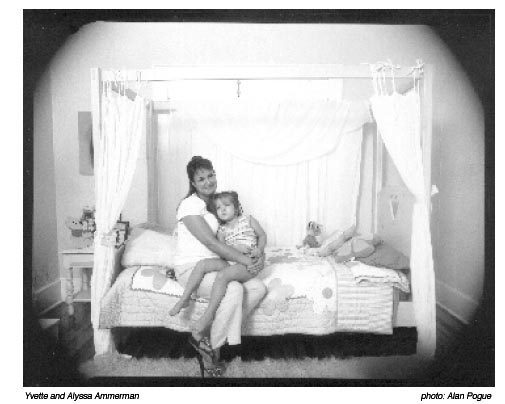
The Ammermans didn’t wait for the EPA. They removed Alyssa from the house and tested everything: the dust under the windowsills and inside air ducts, the water, her toys, and exposed paint. Nothing inside the house had elevated levels of lead. The EPA offered to clean up the soil in the front yard but not the back, where Ramirez-Ammerman says her daughter played. “It wasn’t in the front yard where she was exposed,” she says. “She played in the backyard but [the level they found] wasn’t high enough.”
It would take six months for the EPA to complete its clean-up. Rather than simply trust the agency, the Ammermans covered every bit of soil in the yard with gravel and a whole lot of sod. “If we hadn’t had that second test, we wouldn’t have known, and she would have been exposed like crazy,” says Ramirez-Ammerman.
I am standing in the old Smeltertown cemetery when Juan Garza lends me the book Metal Magic: The Story of the American Smelting and Refining Company. It’s a blazing hot July afternoon, and the desert landscape offers no respite. Stretching out for several acres are gravesites in various states of advanced decay. A few are fenced-in monuments with clear inscriptions but many more are broken crosses next to coffin-shaped dimples in the dusty, bleached-brown soil. In the background, several hundred yards away, are the ASARCO smokestacks. Garza is one of a number of El Pasoans who have educated themselves on the history of their industrial neighbor. This cemetery, the last remnant of Smeltertown, is an important marker in that story.
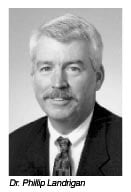
According to Metal Magic, the American Smelting and Refining Company began as a stock speculation scheme in 1899. The book, published 50 years later to celebrate ASARCO’s golden anniversary, noted that some of the same players who created ASARCO were also involved in “the mother of all trusts,” the Standard Oil Company. Part of the original combine included the El Paso Smelting Works. When that facility was built in 1887, on a tract of more than 600 acres along the Rio Grande, there was not much to the city of El Paso. The ore came by railroad from the Santa Eulalia mine in northern Mexico. At first the facility just processed lead, but a couple of decades later, ASARCO added a copper smelter. In the 1940s, the company constructed a secondary zinc fuming operation, which lasted until 1982. (The lead smelter ended operations in 1985 for lack of material; the final smelter, for copper, was sidelined in 1999 when prices for the metal dropped too low.)
As early as the 1920s, ASARCO—and many people around the nation who lived near its facilities—knew that what came out of the smelters could make people sick. The most readily apparent danger appeared to be from sulfur dioxide, which had a tendency to kill the crops in adjacent farmland. The terrors of lead and arsenic were not well understood. Airborne exposure had yet to be studied.
ASARCO hit upon a remedy to its pollution problem that served many industrial facilities well for the next 50 years. Up until 1925, most stacks rarely exceeded 200 feet. As the result of litigation in the 1920s, ASARCO made a practice of raising its stacks to above 400 feet. Dr. Landrigan remembers that the early scientists at the EPA used to joke about it. “[They’d] say that the solution to pollution was dilution.”

In 1949, ASARCO added several hundred feet to the El Paso stack. Almost 20 years later, it constructed an 828-foot stack as the centerpiece of its operations. The company was a solid corporate citizen in El Paso back then, and a handmaiden to the city’s growth. It donated land near the smelter for the campus of the University of Texas at El Paso (UTEP), which started in 1914 as a mining and metallurgy college. ASARCO created a community for its workers. It rented them land on its property so that the workers could build houses. They called it Smeltertown. A current ASARCO official says there was even a company store (but no paved roads despite the pleas of residents).
ASARCO needed all the good will it could generate, even back then. It proved useful for the company to maintain relationships with the staffers in the city’s health department. (One sanitary engineer for the health department was rumored to have taken a forced retirement in 1970 when it came out that he also drew pay as an ASARCO consultant.) Periodically there would be complaints to city authorities about the sulfur clouds. Residents would flee into their homes to escape the yellow smog. It was rumored that ASARCO routinely waited until evening for its big releases or until the wind was blowing toward Mexico just across the river from the plant. Ironically, the way El Pasoans cool themselves may have increased their exposure to toxins in the air, notes Garza. In desert areas like Arizona, New Mexico, and El Paso, evaporative coolers known as swamp coolers have been prevalent for well over half a century. Unlike air conditioners, which circulate air, swamp coolers draw air from the outside, add moisture, and pump it into the house.
The first serious challenge ASARCO faced from El Paso authorities didn’t come until 1971. The city and the state air control board started to study readings of the emissions from the smelters. They wanted the information for a lawsuit against the company over the sulfur dioxide releases. In the course of taking depositions and testimony it came out that ASARCO was also releasing massive quantities of heavy metals. Dr. Bernard Rosenblum, head of the city health department, looked into it. His investigation determined that the smelter had emitted 1,012 metric tons of lead, as well as 508 metric tons of zinc, 11 metric tons of cadmium, and 1 metric ton of arsenic from its stacks between 1969 and 1971. Rosenblum estimated that 2,700 people between the ages of 1 and 19 in a four-mile radius around ASARCO had blood lead levels at or above 40 micrograms. (It’s unclear whether his calculation included the Mexican side.)
The doctor desperately tried to get the attention of authorities outside El Paso to tell them about the situation. He wrote to everyone from the EPA to Texas Senator John Tower. Finally, his distress signal was heard by the CDC in Atlanta. In early 1971, the CDC dispatched two young doctors to investigate. One of them was Phillip Landrigan, a young second-year officer in the U.S. Public Health Service.
We expected that maybe 2 or 3 percent of the children whose blood we got would have levels above 40 micrograms,” remembers Landrigan, sitting in his spacious office in New York this past August. (Since his first trip to El Paso, the scientist has become one of the world experts on child lead poisoning.) Instead, Landrigan and his colleague found that more than half their subjects had elevated lead levels. They went back to the CDC and sold their bosses on a larger study. After extensive testing, a team of about a dozen scientists determined that 59 percent of those children from 1 to 9 years old living within 1.6 kilometers of the smelter had lead levels high enough to be considered dangerous. They also found high levels in the soil considerably beyond the 1.6 kilometer radius. There was no doubt in Landrigan’s mind that the major source of the contamination came from the smelter stacks.
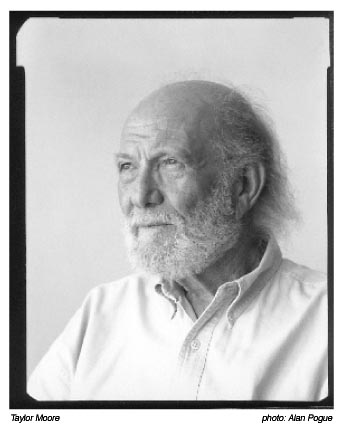
ASARCO to this day denies that it is responsible for heavy metals contamination in El Paso. “This is an urban area,” says Lairy Johnson, an environmental manager at the smelter. “There is going to be lead.”
After the study, the CDC sent Landrigan overseas. During that time, ASARCO and the city fathers took action. In February 1972, ASARCO and the city settled the lawsuit. They decided that contamination from the plant had affected only Smeltertown. Since ASARCO owned the land, it just needed to evict the workers to solve the problem. Some of the families had lived in Smeltertown for generations. No matter. Lawyers settled on a formula of payouts, ranging between $500 and $7,000, based on blood lead level, according to Mary Romero, an academic who wrote about the community for a collection of essays called The Chicano Struggle. “Negotiating evictions as the method to reduce lead exposure was an important compromise because it restricted responsibility and obligations to a manageable level,” wrote Romero. “Evacuation abrogated the city’s responsibility to provide services to Smeltertown and ASARCO’s responsibility to decontaminate the area.”
To make everything copacetic, the company provided its own scientist, Dr. James McNeil, to contradict Landrigan and the CDC. In one paper, McNeil went almost to comic lengths to not name the company as a responsible party. Analyzing children’s blood tests from El Paso, he wrote: “A unique group of children discovered accidentally presented a naturally occurring experimental model for the study.”
McNeil blamed the elevated lead levels on economically impoverished children eating lead-based paint. He stressed that blood lead levels in the range of 40 micrograms to 80 micrograms were perfectly safe if a child had good nutrition. “From a practical standpoint, the problem with Smeltertown has been eliminated,” he wrote. “The village is gone. Former residents have been scattered throughout El Paso, their rent has gone up and their money for food has gone down.”
When Landrigan returned to the United States he put together a proposal for a study of the smelter area based on new research which indicated that child lead poisoning, even at low levels, could harm the nervous system and brain function. ASARCO and the city fathers had other ideas.
In March of 1972, the El Paso Pediatrics Society made the following announcement. “From the statistical data available to us there is no evidence that there is a lead intoxication problem outside Smeltertown.” Two months later, the Lead Surveillance Committee of the El Paso County Medical Society met. Doctors James McNeil, Bernard Rosenblum, Jose Alva, Jose Roman, and Jorge Magana formed the committee. This medical group advocated an end to blood lead sampling outside Smeltertown. The last order of business at the meeting was to reject a $50,000 grant from the CDC for Landrigan to do more studies.
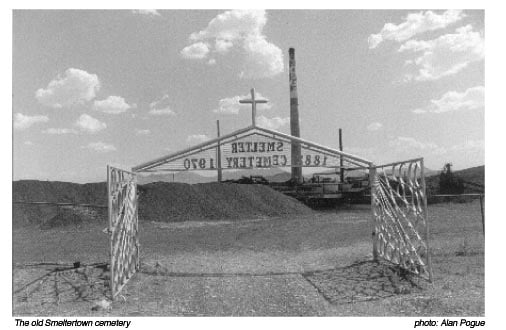
Upon arriving in El Paso, Landrigan received a letter from Rosenblum, canceling any continued investigation. It said the El Paso Board of Health had instead decided to accept McNeil’s study, funded by an industry front group called the International Lead Zinc Research Organization. “First, there was disagreement as to the validity of the studies,” Rosenblum wrote, explaining their rationale. “Secondly, Dr. McNeil’s studies are being [privately] funded where your studies would be done at taxpayers’ expense.”
Landrigan protested to the Offic
of the Texas Attorney General. “I don’t know who spoke to whom, but within a day or two the invitation was reinstated and we got to
work,” he says.
Their work, published in the medical journal Lancet, showed evidence of neurological problems in children who lived near ASARCO, even in some with no obvious symptoms of lead poisoning. Still, McNeil continued to be a contrary force. He did his own study of IQ, funded by ASARCO, that found no evidence of a negative effect, according to Landrigan. “He dogged our heels for the next couple of years until he finally faded from the scene,” says Landrigan. “We would go to meetings and present our paper, and he would jump up from the audience and claim that we had done our study wrong, and a scientific debate would ensue. That sort of unpleasantness lasted for a couple of years, but ultimately, his paper was never published anywhere except some local journal. Ours was published in a journal of international repute. So I think it’s fair to say that at the end of the day, we won the scientific battle.”
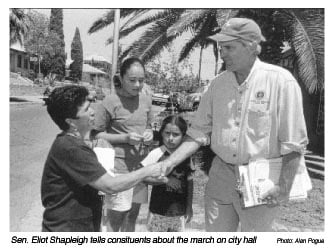
The attention from Landrigan’s team helped force ASARCO to install more pollution controls on its smelters. The scientists returned to El Paso about five years later and found that the lead levels had gone down. “They weren’t what you would call normal,” he says, “but they were certainly lower than they had been.”
Landrigan then turned his attention to studying lead poisoning in other communities in the United States and abroad. For the next 20 years, El Paso slid back into business as usual. The controversy over ASARCO appeared to have died along with Smeltertown.
The combination of a craggy face, long wiry white hair, and an unwavering intensity sometimes gives Taylor Moore the aspect of a hermit-turned-street preacher. But since returning to El Paso in 1999, after a 50-year absence, the retired trial lawyer has become one of the consciences of the city, a muckraker who has amassed an impressive library of documents relating to ASARCO. The 72-year-old Moore’s investigations into the company and its corrupting influence on local authorities have transformed the debate on the smelter forever.
Looking for something to do after his return to town, Moore took a Texas Master Naturalist class with a focus on geology. He didn’t know much about ASARCO other than the bad reputation it had contributed to El Paso. Wherever Moore traveled, he says, people identified El Paso as that smelly, polluted place. He didn’t know at the time that only a few years before his return, the Texas Department of Health had investigated an apparent cluster of multiple sclerosis cases around the smelter. Their report concluded: “We found a statistically significant two-fold excess of MS based on 14 cases of definite and probable MS.” Nothing happened beyond a confirmation of an excess of the disease. There appears to have been little public disclosure of the study.
As part of his schoolwork, Moore offered to help a UTEP professor on an environmental task force formed by then-mayor Ray Caballero. The professor had a stack of historical documents relating to ASARCO that needed to be read and organized. Moore sat down with the pile and came across the letter in which the city’s leading pediatricians had tried to run Landrigan out of town. These days, he calls it “the wiggle letter,” because when Moore shows it to people in authority they start to wiggle nervously. “It’s damning and so I started to look at what other critics were doing about ASARCO,” he remembers.
It seemed to Moore that everywhere it had operated, ASARCO had problems. The list of cleanups exceeded 40 sites, spread out over the nation: Montana, Arizona, Idaho, Missouri, Illinois, Nebraska, Oklahoma, Washington, and Colorado. In many of the communities ASARCO had operated for more than a 100 years—the first 70 without any regulation to speak of—and residents had tremendous loyalty to the company. However, the good will evaporated as studies showed elevated levels of contamination, and the company acquiesced only to piecemeal remediation or fought such efforts outright in court.
In 1999, Grupo Industrial Minera Mexico won a bidding war for ASARCO with an offer of $2.2 billion and an agreement to assume the conglomerate’s sizable debt. The merger made Grupo the third-largest copper producer in the world. Ironically, the company had once been part of ASARCO, but the Mexican government forced the multinational to sell its holdings, creating Grupo.
Almost immediately after Grupo acquired ASARCO, the price of copper dropped precipitously. Suddenly, it became an open question whether the communities throughout the United States that needed money from the company to clean up its toxic legacy would get it. Many feared the company would roll all its liabilities into a shell business and then try to cast it off. In order to put its house in financial order, Grupo wanted to sell one of its more lucrative mines. The Justice Department put a halt to the sale, as it entered into negotiations with Grupo in 2001 to establish a trust fund to pay for remediation.
Moore eyed the negotiations with suspicion. The Bush administration had close ties to ASARCO and the lead industry. James Connaughton, the chairman of the White House Council on Environmental Quality, which helps set federal environmental policy, had previously worked as a lobbyist for ASARCO. The Justice Department’s top environmental lawyer, Thomas Sansonetti, had worked for a Wyoming law firm that had long represented ASARCO. When this became public, Justice Department officials announced that Sansonetti had recused himself from any dealings with the company.
In August 2002, the Justice Department reached a settlement. ASARCO agreed to create a $100 million trust fund to remediate its contamination. At least $1 million a year would be earmarked to El Paso cleanup. Some estimates put the clean-up costs for all the ASARCO sites as high as $1 billion. Just the price tag to clean a site in East Omaha, Nebraska, where ASARCO is accused of contaminating about 20 square miles is expected to cost more than the amount of the entire trust fund.
It took a research team spearheaded by environmental chemists from New Mexico State University in 1999 to discover elevated levels of heavy metals on the UTEP campus. Once again, El Paso’s toxic legacy was back in the local news. The scientists found lead levels of more than 2,200 parts per million. University officials downplayed the finding, saying it posed no threat to a student body unlikely to put dirt in their mouths. Subsequent tests of the university’s daycare center showed normal levels. ASARCO blamed the contamination on brick plants in Juárez and car emissions. (Later it would put the onus on a company that bought and crushed the slag that resulted from ASARCO’s ore processing.) Ambient air monitors in the area failed to pick up increased toxic metals in the dust that periodically swirls through campus. The city had existed with these lead levels for decades, so why be concerned now?
Still, pressure from Mayor Caballero and state Senator Eliot Shapleigh (D-El Paso) brought the EPA in to do more testing. At a public meeting, agency officials unveiled a plan for massive sampling. “It was a huge surprise to everybody,” says Tracy Yellen, president of the Kern Place homeowner’s association.
By July 2002, the EPA had identified ASARCO as a potentially responsible party for the contamination. “We do not believe EPA has demonstrated that there needs to be any clean-up much less that ASARCO is responsible for the metals found in the soils,” the company responded.
By September 2004, the EPA had tested more than 3,638 residential properties. A total of 1,082 showed contamination. At press time, 578 properties had been cleaned and 504 are awaiting EPA action. The estimated cost to clean each property is calculated to be as much as $30,000. Although the EPA has received $2 million from the ASARCO trust fund for the remediation and has spent several million dollars more of tax-payer dollars, the question remains, how will El Paso pay for a complete clean-up? EPA officials suggest that one way to finance it would be to declare the affected areas a Superfund site.
However, homeowner groups and ASARCO have resisted this suggestion. The company will tell anyone who listens that the Superfund designation decreases property values, stifles economic development, and takes decades to complete. ASARCO believes the EPA is overcharging for the clean-up and that there are less costly ways to remediate. Furthermore, the company, along with the city, has pushed for state regulators to raise the lead level it uses to determine what properties need to be cleaned. The EPA has operated under a standard of 500 parts per million of lead. The new standard, if accepted, would be 640 parts per million. ASARCO calls the new standard a “site specific” one. A higher standard would also mean fewer properties to clean.
“The health threat is overblown,” says Lairy Johnson. “It’s not an emergency.”
For homeowners, it was hard to be concerned about something they had lived with for decades. “It was a lot to swallow,” says Yellen. “One day you live in a beautiful neighborhood, and the next day you live in a beautiful neighborhood that could be a Superfund site.”
Yellen says she has received calls from seniors who have paid off their homes and are worried about losing their equity. “I talk to families that have kids, and they are not worried about [contamination],” she says.
Yvette Ramirez-Ammerman understands the concerns. Lead doesn’t make you break out in boils, she notes, and it’s hard to say if children might be damaged in the future. As a military family, they move a lot and depend on home equity. “This is our biggest investment,” she says, gesturing to her house. “But I wouldn’t for a minute choose our investment over our daughter’s ability to move.”
Without a recommendation from the city and the governor, the EPA will not place El Paso on the national priority list for Superfund. Citing ongoing negotiations over the clean-up between ASARCO and the EPA, current El Paso Mayor Joe Wardy—who, backed by local business interests, defeated Caballero in 2003—refused to make the request this fall. The next opportunity won’t come until the spring.
El Paso residents were so consumed by the debate over whether they should allow parts of the city to become a Superfund site that few noticed ASARCO’s 10-year operating permit had come up for renewal before the Texas Commission on Environmental Quality (TCEQ). Suddenly, with copper prices rising once again, the smelter going back online seemed like a real possibility. It wasn’t lost on the company or its allies. Among the groups who filed amicus briefs for the permit renewal were the Texas Association of Business, the Texas Chemical Council, and the El Paso Chamber of Commerce. Under the permit, ASARCO would be allowed to emit a grab bag of toxins, including 6,672 tons of sulfur dioxide and 7.69 tons of lead. The company insists that new pollution-control devices, installed at a cost of tens of millions of dollars, make the smelter a state-of-the-art facility. But while there is much disagreement in El Paso over the issue of a Superfund designation, there is more unanimity on the question of whether ASARCO should start up again. “We’ve enjoyed the last few years without ASARCO operating,” says Yellen. “We’ve seen the air quality improve.”

Renewal of air permits is usually a perfunctory exercise, without even a contested hearing. But in this instance, the TCEQ decided to allow for a hearing on the renewal permit. ASARCO appealed. A majority of the El Paso city council decided not to take a position on ASARCO’s challenge. Many ASARCO opponents interpreted it as tacit approval by the council for renewal of the permit. The specter of ASARCO starting up again galvanized Sen. Shapleigh and local activists. The senator grew up near the smelter and remembers it at its worst. “When the smelter cranked up, my mother would come into the yard and tell me to come inside,” he remembers. “One could feel burning acid in the back of the throat and see yellow flakes coming down from the sky.”
City officials put the item back on the city council’s agenda. The weekend before the meeting, Shapleigh, along with community residents, including Yellen, walked the neighborhoods urging people to turn out for a march to city hall.
On July 20, hundreds of people, men, women, and children joined the march. It was a demonstration the likes of which normally apathetic El Paso had not seen in a long time. The marchers packed the council chambers. After nearly 90 minutes of discussion, the city council reversed its earlier decision and voted to contest the permit. (At press time, the TCEQ had yet to set a date for the contested hearing.) “In my lifetime, I’ve never seen an environmental march in El Paso,” says Shapleigh.
Many of the marchers say the demonstration signals that a change has come. University students, many brought into the process after hearing presentations by Moore and Shapleigh, are getting involved. The issue has politicized homeowner groups and raised concerns about economic and environmental justice. The Sierra Club is planning a push on both sides of the border to call attention to pollution. A Mexican environmental group, Organización Popular Independiente, is trying to educate people in Juarez, where contamination is presumed to be severe.
And maybe the value system of a city is changing. “Leaders who value polluters and greed over people, strip mine a community’s future,” says Shapleigh. “My hope is that those folks who value our quality of life—the people and environment of the Chihuahuan desert—will take heart, but there is still much to do.”
Jessica Chapman and Kris Bronstad contributed research assistance for this story.


